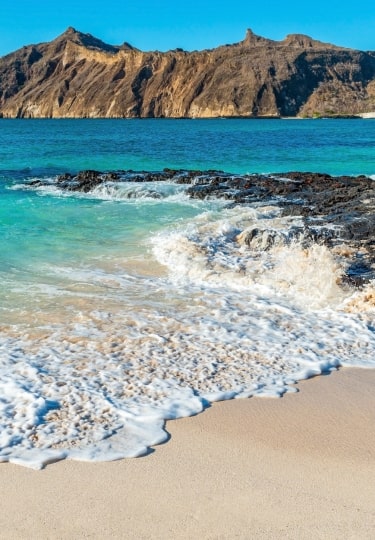The easternmost of the Galapagos Islands, and the fifth-largest, San Cristobal offers an impressive amount to see and do. Like all of the islands in the archipelago, San Cristobal is home to spectacular wildlife, from sea lion colonies to iguanas, sea turtles, rays, sharks, and the blue-footed boobies for which the Galapagos is so famous.
There’s human interest here, too. San Cristobal is where the young naturalist Charles Darwin first set foot on the islands. Its history as a settlement is colorful, not least its time as a penal colony. Today, though, its biggest focus is conservation.
Add to this powdery beaches of pure white sand, dramatically sculpted rock formations, and a quirky little town to explore, and you’ll want to spend as much time as possible in this extraordinary spot.
Why Visit San Cristobal, Galapagos
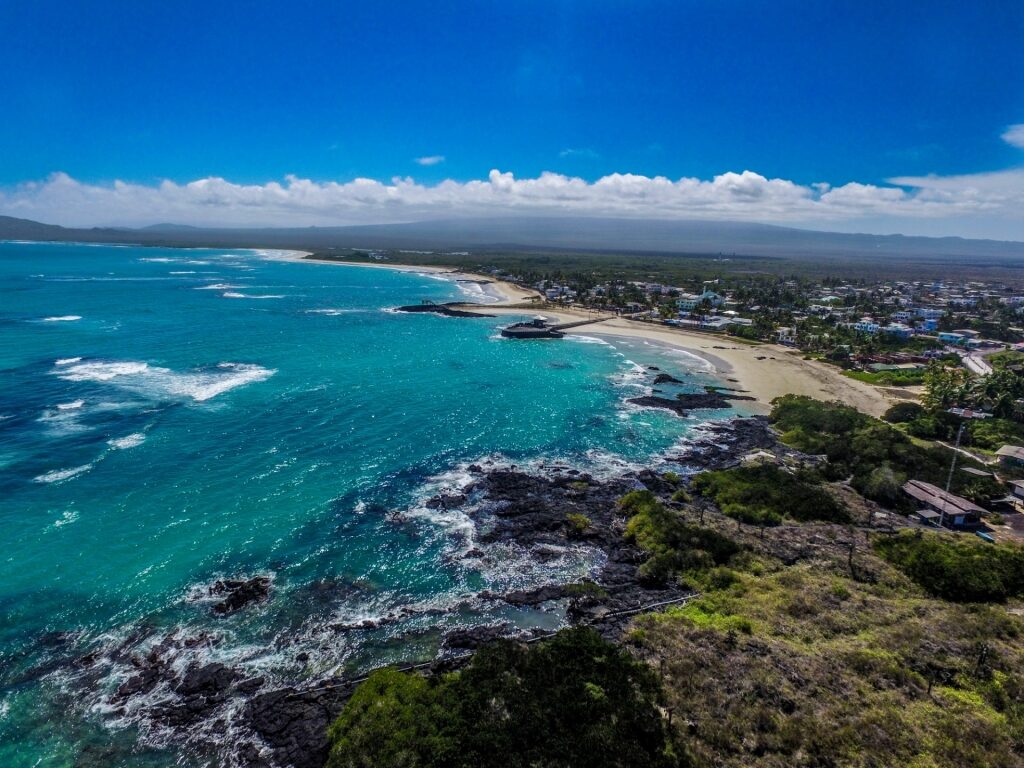
San Cristobal
When you’re planning your journey around the islands, it’s worth choosing one that incorporates San Cristobal, Galapagos.
You’ll be following in the footsteps of the great Charles Darwin; this is where he first went ashore in the islands in 1835 on an expedition that would lead to the formulation of his ground-breaking theory of evolution by natural selection.
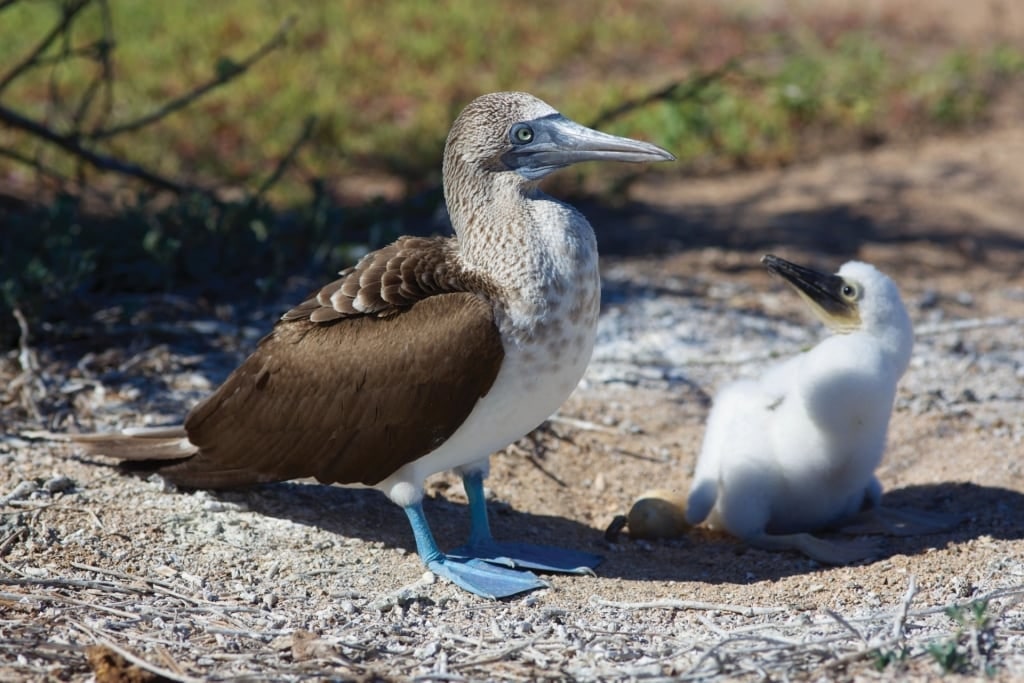
Blue-footed boobies
The wildlife viewing is like nowhere else on earth all over the Galapagos, but even within the archipelago, the island of San Cristobal stands out. It’s here that you’ll see all three types of boobie—blue-footed, red-footed, and Nazca—together.
There are coral sand beaches inhabited only by sea lions and iguanas, and some of the best snorkeling in the Galapagos, especially around dramatic Kicker Rock.
San Cristobal is also unlike most other islands in the Galapagos in that it has a settlement, Puerto Baquerizo Moreno. This is the tiny capital city of the province and the administrative headquarters of the islands.
A visit here is something of a culture shock if you’ve spent time immersed in nature, but a great opportunity to learn more about the islands’ history, sample local food, and enjoy a taste of life in this very special place.
History & Culture
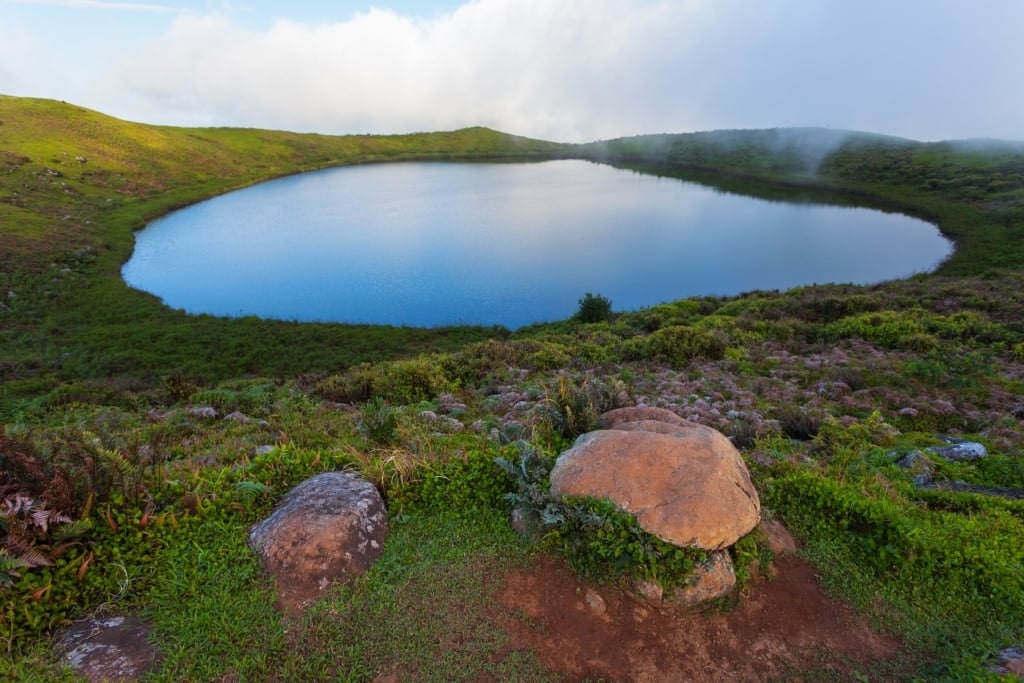
El Junco
The island’s name, San Cristobal, comes from St. Christopher, the patron saint of sailors. The fact that there’s a freshwater lake here, El Junco, led to the first settlement in the Galapagos being established here.
While the Galapagos today is a peaceful place, dedicated to conservation, this hasn’t always been the case. Despite the difficult living conditions, various characters have tried their luck to make money out of the islands.
Manuel Cobos and José Monroy started in 1858 by harvesting the purply-blue lichen orchella, and exporting it to use as a dye. Cobos, something of a serial entrepreneur, also set up an agricultural center to produce leather from wild cows, and oil from fish and the then abundant tortoise population.
He also ran the penal colony that was set up here in 1880, using the prisoners as slave labor to run his sugar cane plantation. Cobos was deeply unpopular and was assassinated in 1904, after which the prisoners escaped.
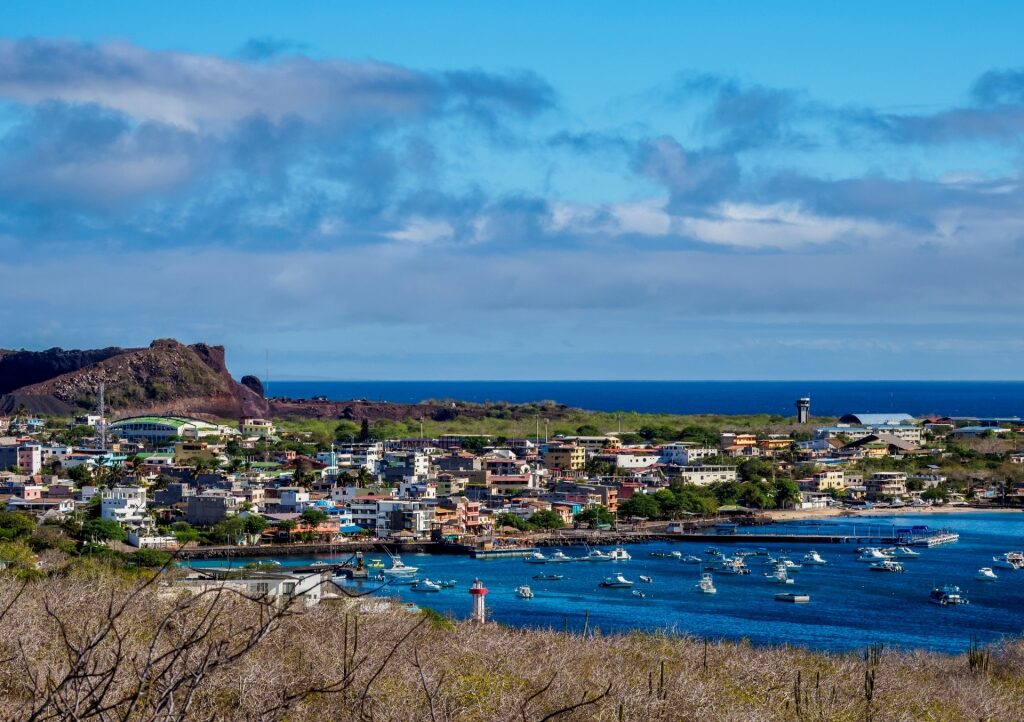
Puerto Baquerizo Moreno
The town of Puerto Baquerizo Moreno, the capital of the province of the Galapagos Islands, is named after Alfredo Baquerizo Moreno, who visited in 1916—the first Ecuadorian president to do so.
Its population is around 6,000, the second-largest in the archipelago after Puerto Ayora on Santa Cruz island, with most people employed in government offices, fishing, tourism, and education. The university here, San Francisco de Quito, is a hub of research and conservation, with many international students coming here for their semester abroad.
Wildlife & Nature
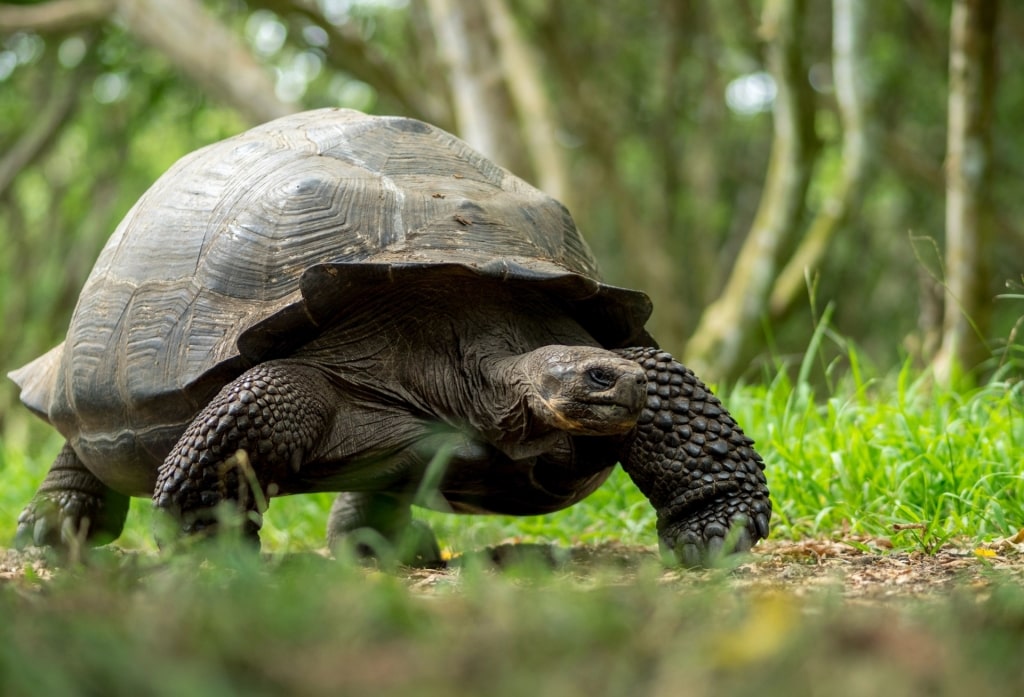
Galapagos tortoise
Wildlife is the premier reason for visiting San Cristobal, Galapagos. There’s nowhere like it. The Galapagos animals and birds are completely unafraid of humans, and as such, the opportunities to see them up close are unrivaled.
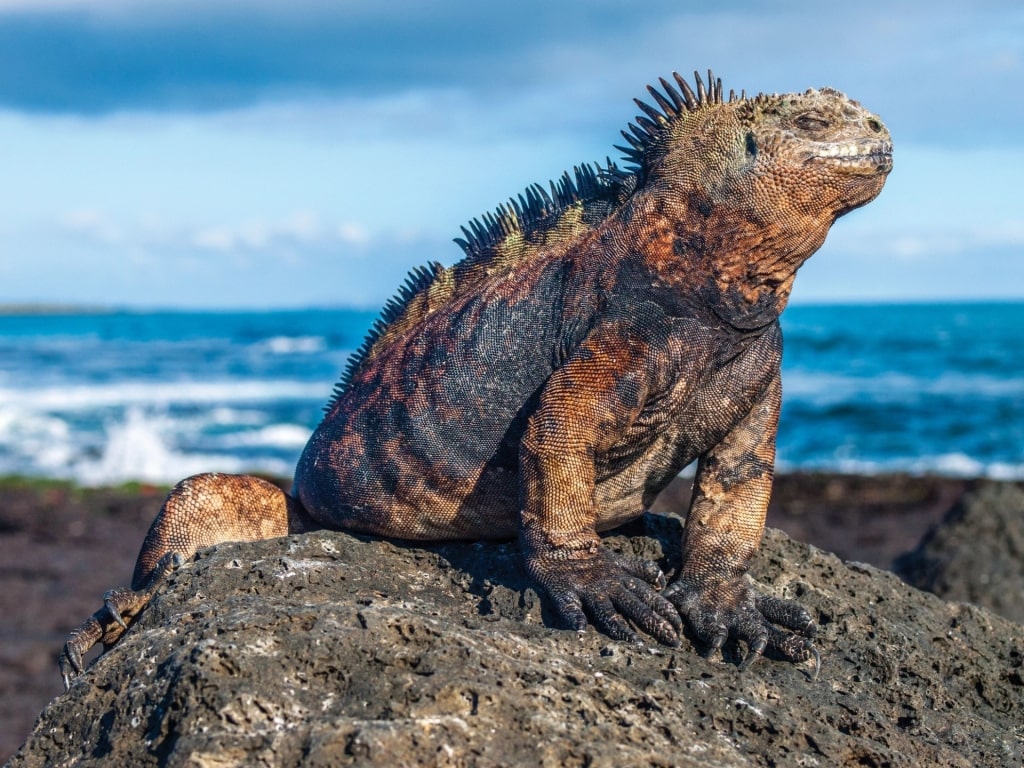
Marine iguana
You’ll find species here that you’ll never see anywhere else, from marine and land iguanas to Galapagos sharks, Galapagos finches, and giant tortoises. There are also hundreds of other creatures, too, from blue-footed boobies to frigatebirds, pelicans, sea lions, Sally Lightfoot crabs, and lava lizards.
San Cristobal has numerous snorkeling spots from which you can admire the underwater world; brilliant shoals of angelfish, Galapagos sharks, sea turtles, and rays.
The island has interesting topography, too. It’s 215 square miles of mostly bare, rolling hills, fields of tumbled lava rock, and wind-sculpted cliffs formed from a series of now-extinct volcanoes.
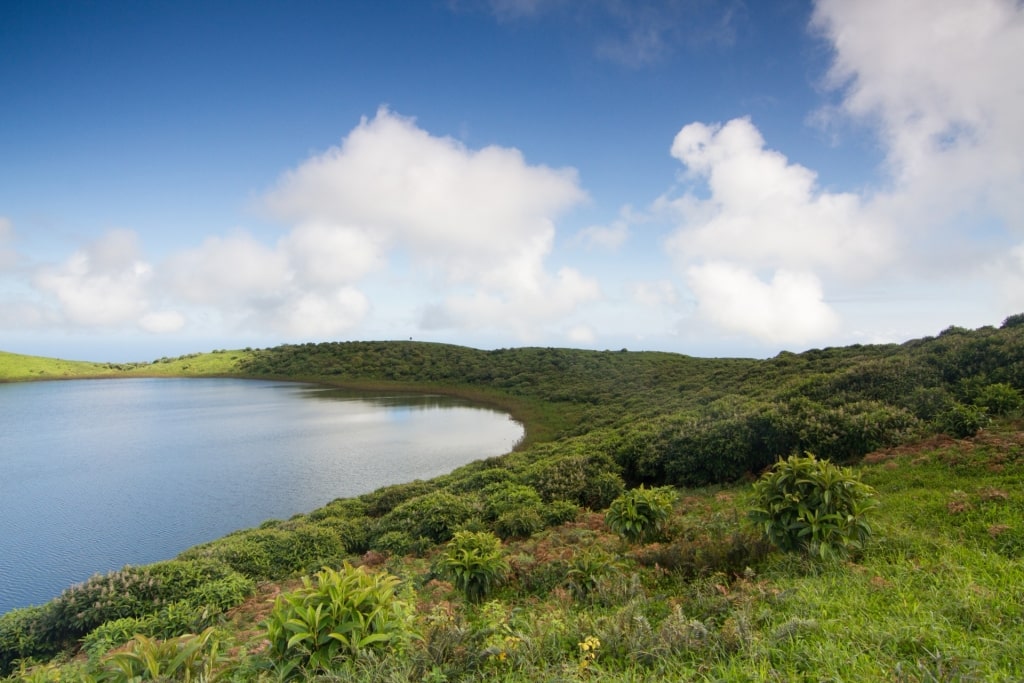
El Junco
There’s one freshwater lake here, El Junco, the only such body of water in the archipelago. One of the most notable features of San Cristobal is the dramatic spike of Leon Dormido, or Kicker Rock, off the west coast.
Around the coast, steep cliffs plunge into the sea, interspersed with white sand beaches. Some of these are accessible to visitors, while others are only for the wildlife.
Tips for Visiting San Cristobal
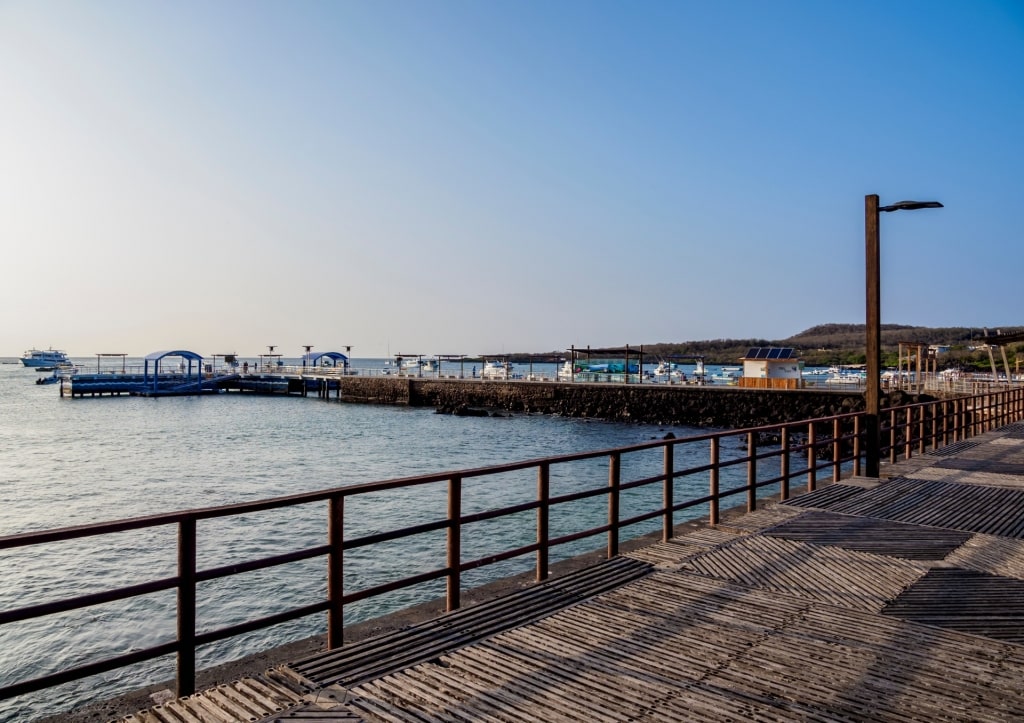
Puerto Baquerizo Moreno
Visits to the Galapagos Islands are strictly controlled by the National Park, and everywhere you go, wildlife takes priority.
All hikes, snorkel trips, and visits ashore (wandering around Puerto Baquerizo Moreno being the exception) are in the company of licensed, expert wildlife guides. You’re not allowed to stray from the marked trails or approach the wildlife.
Leave no litter and take nothing away; enormous effort goes into preserving this pristine place. Biosecurity is strict in the Galapagos, and your luggage will be inspected before you arrive in the islands.
Fresh fruit or anything with seeds is strictly banned as it creates a risk of introducing alien species to this fragile environment.
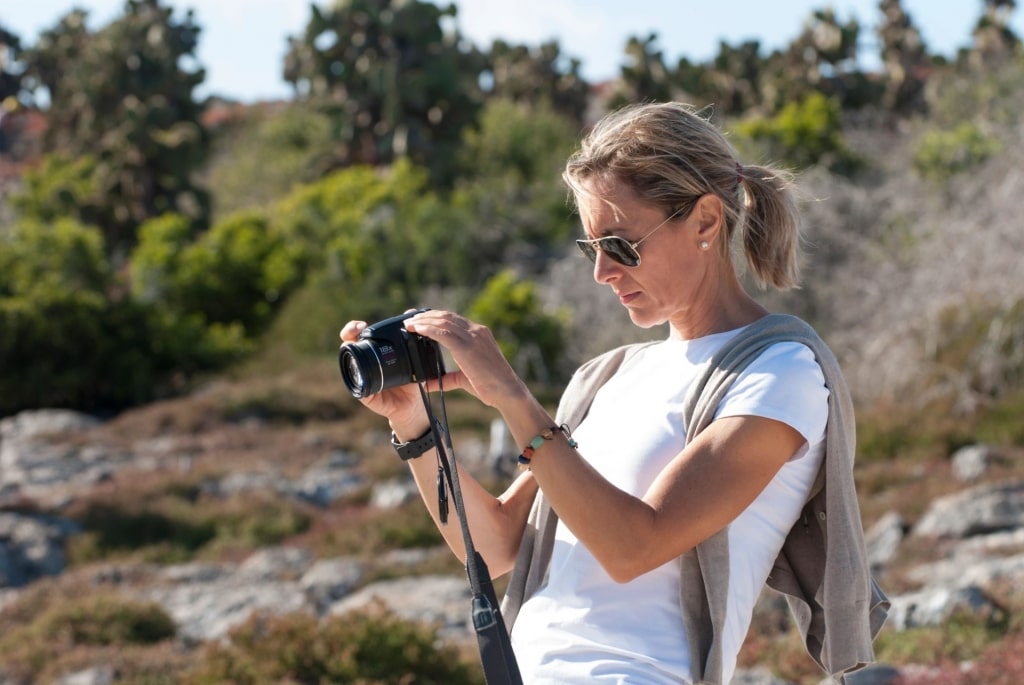
Galapagos
Take reef-friendly sunblock, a hat with a shady rim, and sun-protective clothing in breathable fabrics and neutral colors. Don’t forget a big memory card for your camera, as you’ll take more photographs than you could ever imagine.
Things to Do & Attractions in San Cristobal, Galapagos
Explore Puerto Baquerizo Moreno
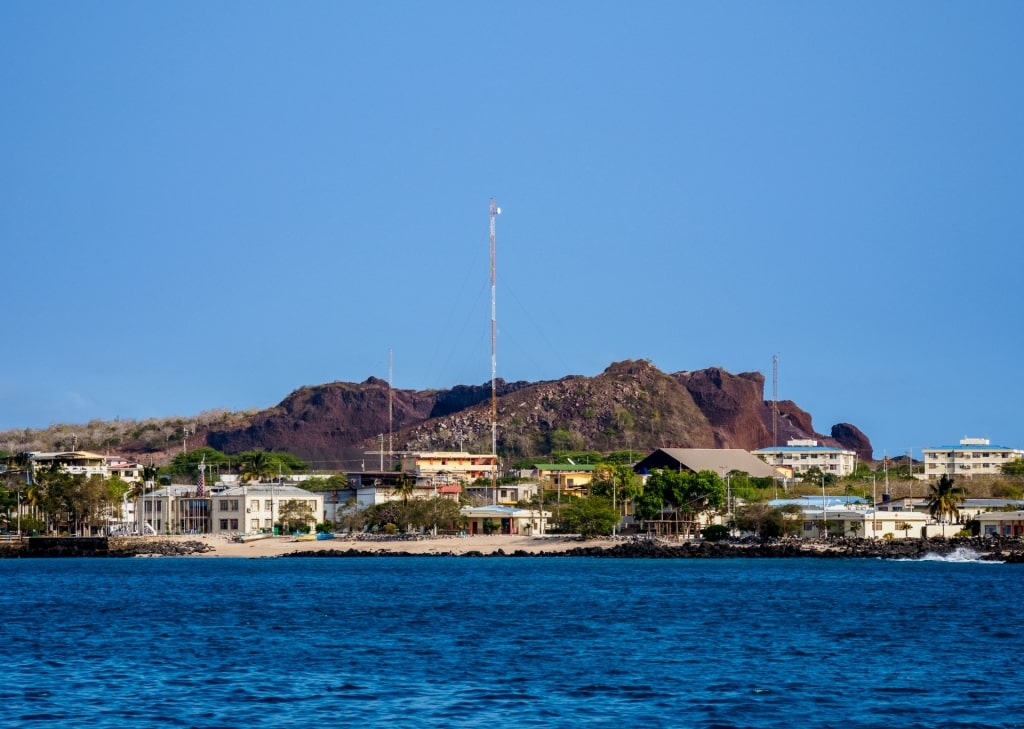
Puerto Baquerizo Moreno
This quaint little town is scattered around two main streets running parallel to a sheltered bay, where yachts and fishing boats bob in the sunshine.
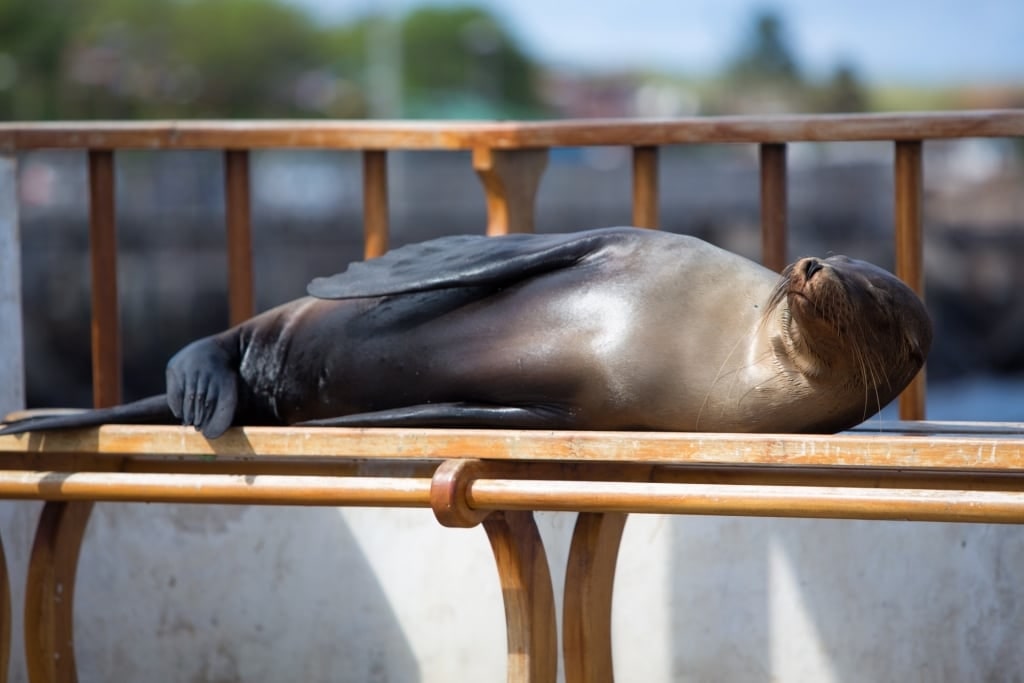
Sea lion
The Malecón Charles Darwin traces the waterfront, with just six small streets running perpendicular in a grid system. It’s easy to wander around, and there are plenty of bars and restaurants to try, as well as souvenir shops.
Don’t be surprised to find wildlife all over the town; sea lions snooze on benches, while iguanas bask in the sun. There are three Galapagos beaches in the town, although humans are only allowed on two of them; the third is left to the sea lions.
Watch the Surfers on Playa Punta Carola
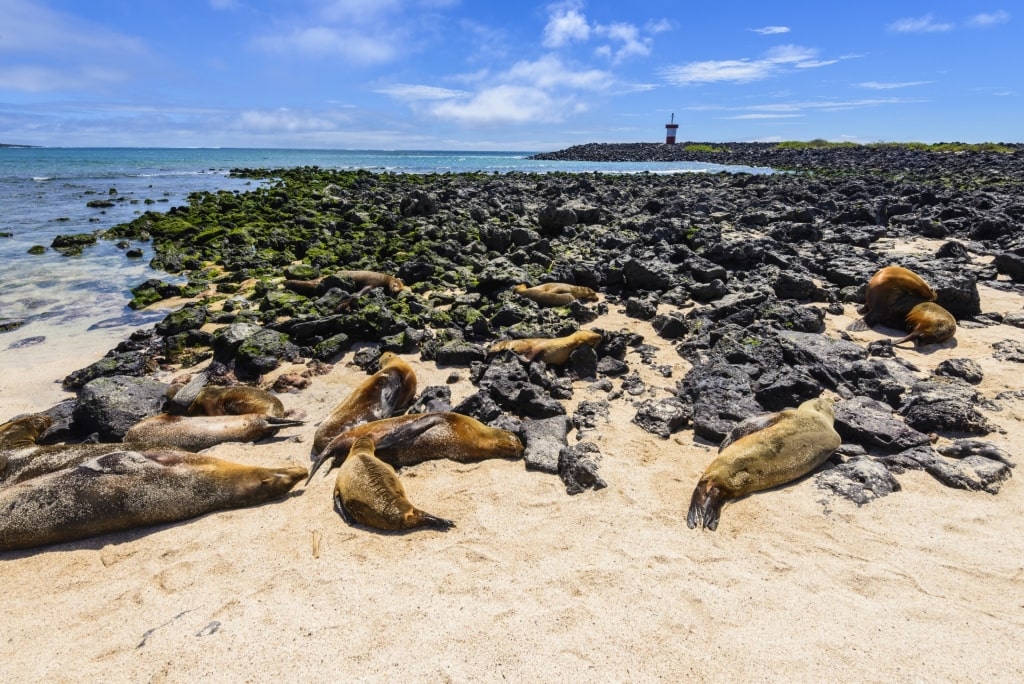
Playa Punta Carola
Somewhat incongruous is the fact that Puerto Baquerizo Moreno has become the surfing hotspot of the Galapagos. The best waves for beginners are at Punta Carola, a 30-minute walk to the north of town, the curving bay guarded by a lighthouse.
Surfers share their space with sea lions and iguanas, while spectators lounge on the white sand. The beach is a popular spot with locals on weekends. There are no facilities, though, as with everywhere in the Galapagos, so take drinking water on your hike.
Learn About the History of the Galapagos
Around 20 minutes’ walk from downtown, the Galapagos National Park Visitor Center is a great place to visit to widen your perspective on the history of the archipelago, as well as the delicate ecosystems and the incredible wildlife. There are interpretation display panels, as well as a small auditorium.
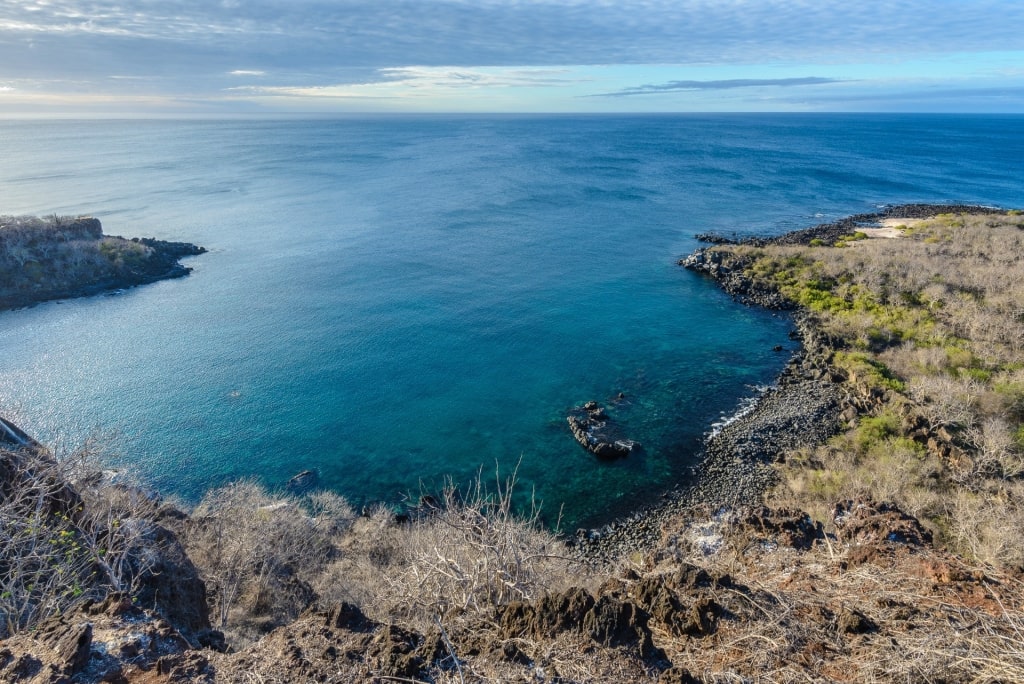
Cerro de las Tijeretas
After your visit, stroll the marked trails around Cerro de las Tijeretas, or Frigate Bird Hill; true to its name, this is a great place to spot frigatebirds, with their distinctive scarlet throat pouches.
Snorkel at Kicker Rock
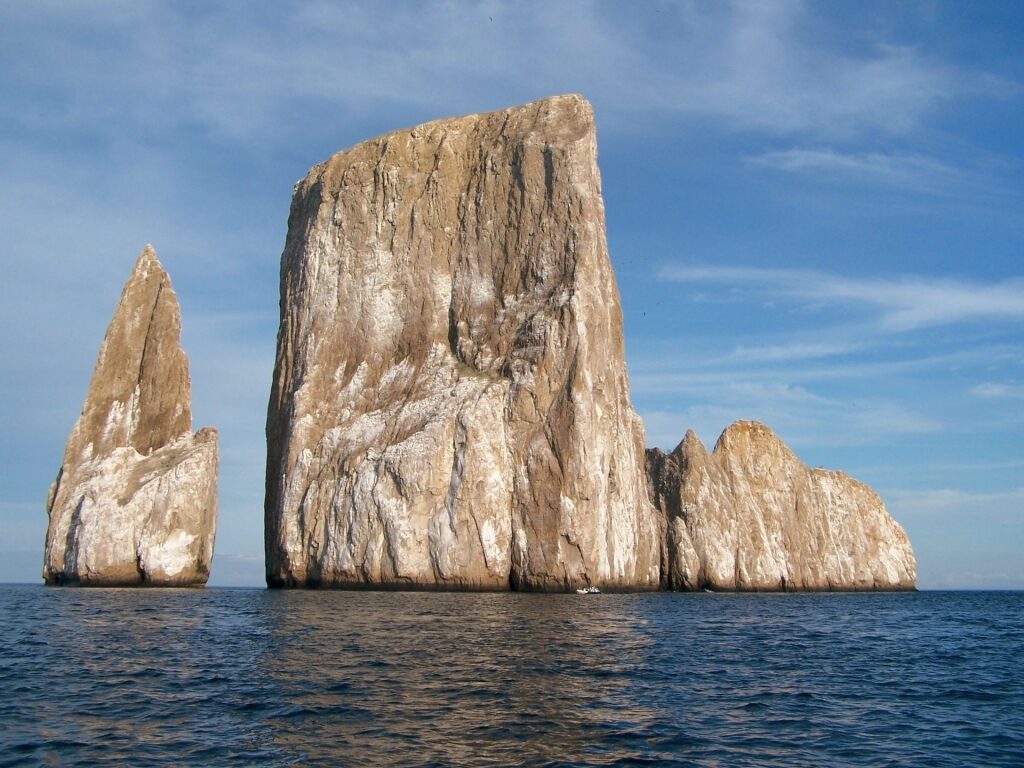
Kicker Rock
The spike of Kicker Rock, or Léon Dormido (Sleeping Lion) as it’s known locally, is one of the most photographed sites in the Galapagos. The rock is technically a tuff cone, split into two and divided by a narrow channel, soaring 500 feet out of the water.
This is a prime snorkeling and diving spot for stronger swimmers, with rich rewards. Giant manta rays, sea turtles, Galapagos sharks, and hammerhead sharks can be spotted in the deep water, as well as colorful fish.
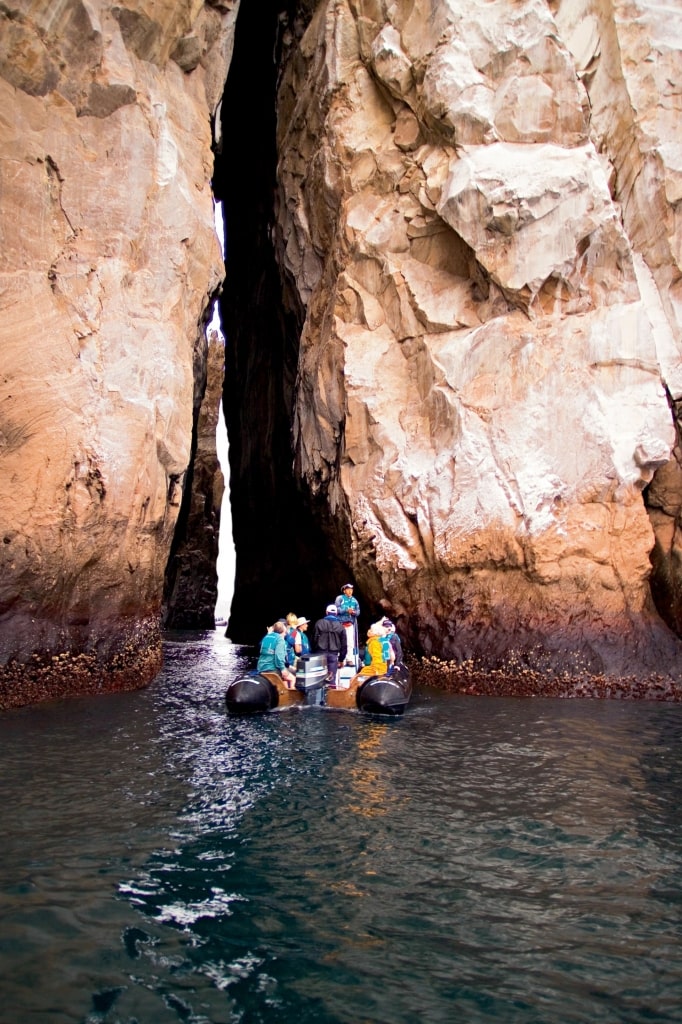
Kicker Rock
If you don’t want to snorkel, don’t miss the chance of a boat ride here. You’ll see dozens of sea lions basking at the base of the rock, as well as blue-footed and Nazca boobies and frigatebirds.
If time permits, position yourself in front of Kicker Rock at sunset. As the sun turns the sky a fiery red, you can catch it sinking through the narrow channel, throwing the whole formation into a dramatic silhouette.
Read: Unique Things to Do in the Galapagos
Swim With Sea Lions at Isla Lobos
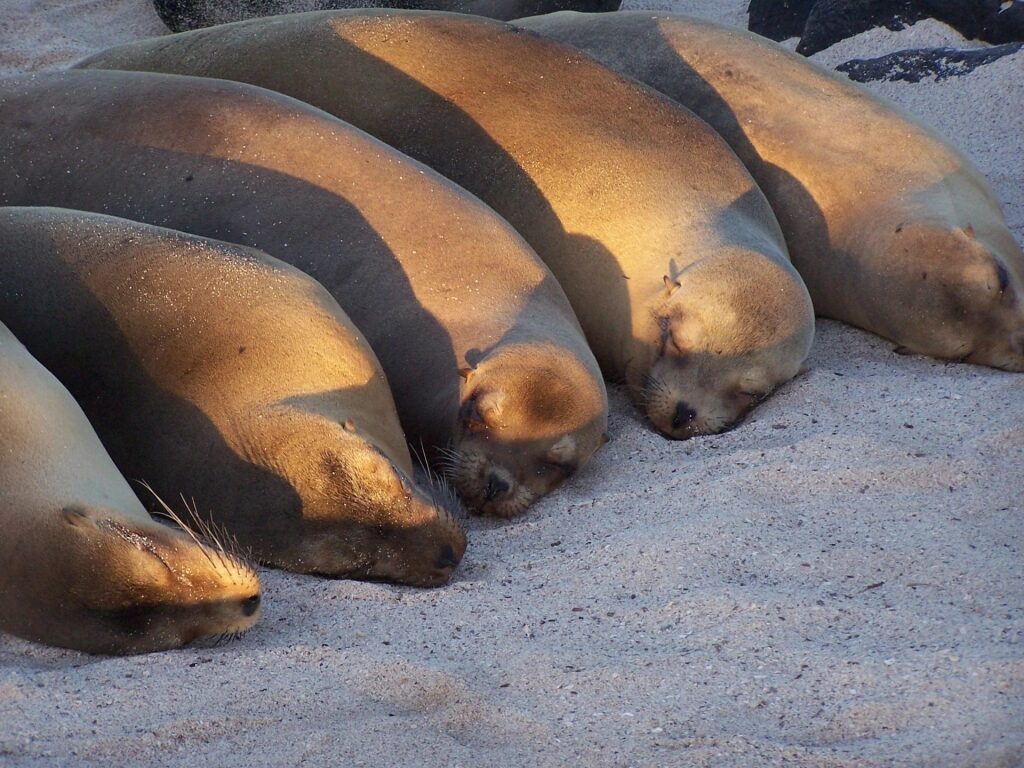
Sea lions
A sandy islet off the coast of San Cristobal, Isla Lobos is best known for its large population of sea lions. You can swim and snorkel from the beach here—and there’s a good chance that you will have company.
Juvenile sea lions in particular are curious, like big puppies, and will zoom around you in the water, inviting you to play. Just bear in mind that they’re strong and exuberant—you need to be confident in the water to swim with sea lions.
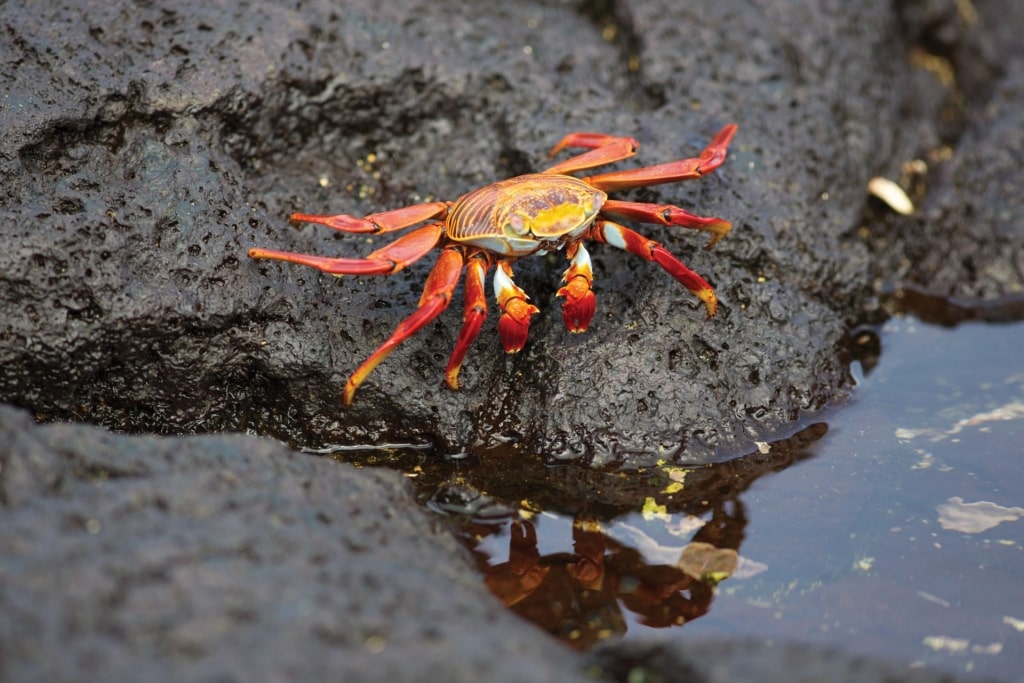
Sally Lightfoot crab
You’re also likely to see iguanas, sea turtles, orange-and-red Sally Lightfoot crabs, and graceful rays here.
Spot Birds at Punta Pitt
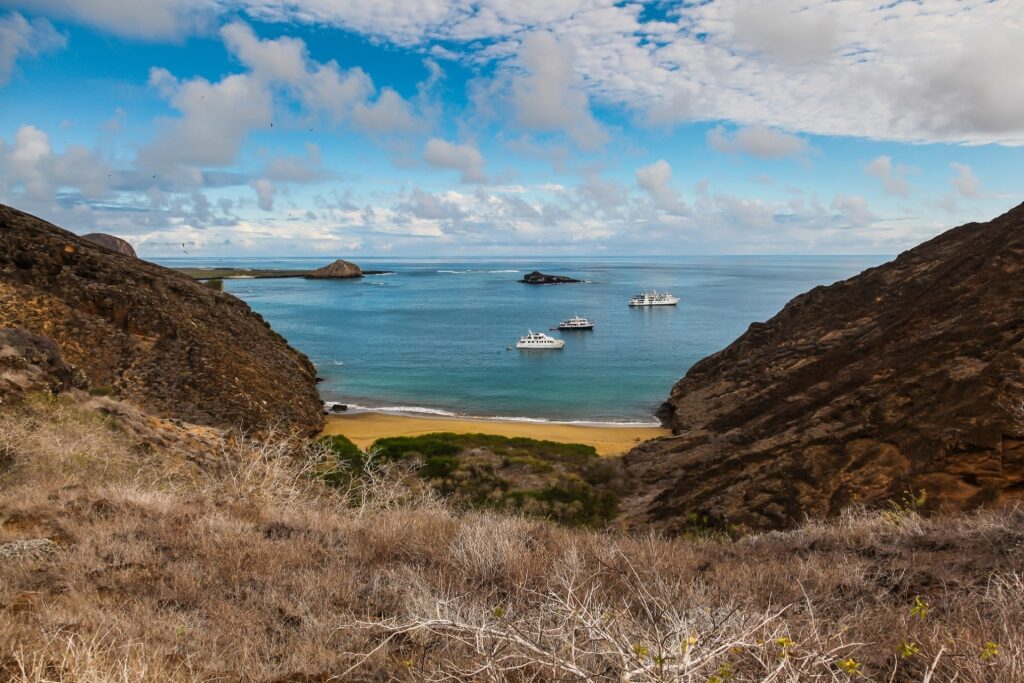
Punta Pitt
At the northeastern tip of the island, Punta Pitt has both spectacular views and impressive wildlife that make visiting here one of the best things to do in the Galapagos.
There’s a small beach of greenish sand here. A noisy bachelor colony of sea lions inhabits the beach from which a steep trail leads through a gully to the top of the cliff, passing aromatic palo santo trees and spiky cacti.
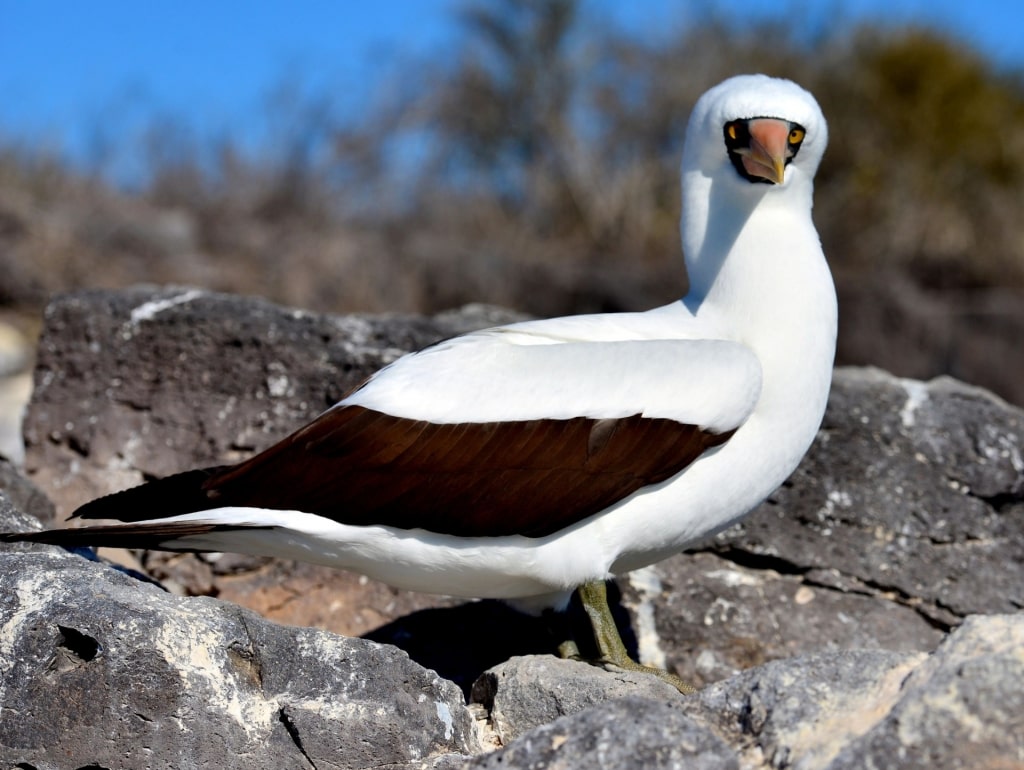
Nazca booby
Here, you can see blue-footed, red-footed, and Nazca boobies; it’s one of the few places in the islands where you can see all three together.
While the Nazca boobies nest in the cliffs and the red-footed in the bushes, their blue-footed cousins lay their eggs on the ground. You have to be careful to step around them, as these Galapagos birds won’t move as you approach.
Tread in Darwin’s Footsteps at Cerro Brujo
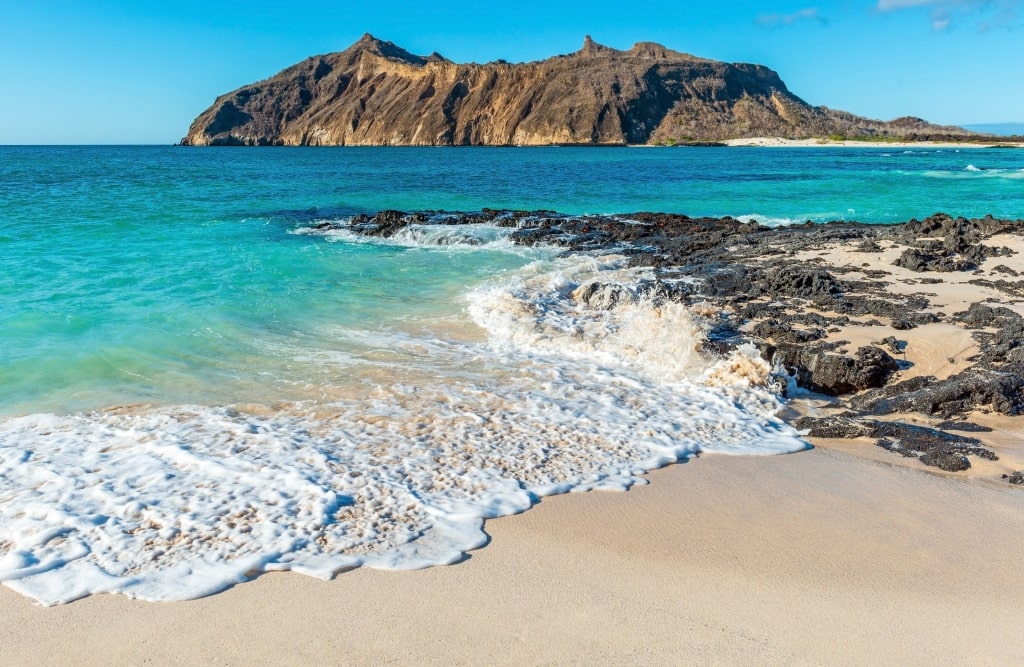
Cerro Brujo
Cerro Brujo, or Wizard’s Hill, is where Charles Darwin first landed in the Galapagos. The hill itself is an eroded tuff cone, used as a nesting site by swallow-tailed gulls, blue-footed boobies, and pelicans. Sea lions and iguanas inhabit a soft sweep of coral sand beach from which you can snorkel.
The lagoon by the beach was once used as a salt mine. Today, Cerro Brujo is a tranquil spot, the lake occupied by egrets and herons. It’s the perfect place from which to gaze at the jagged spike of Kicker Rock, just offshore.
Food & Drink
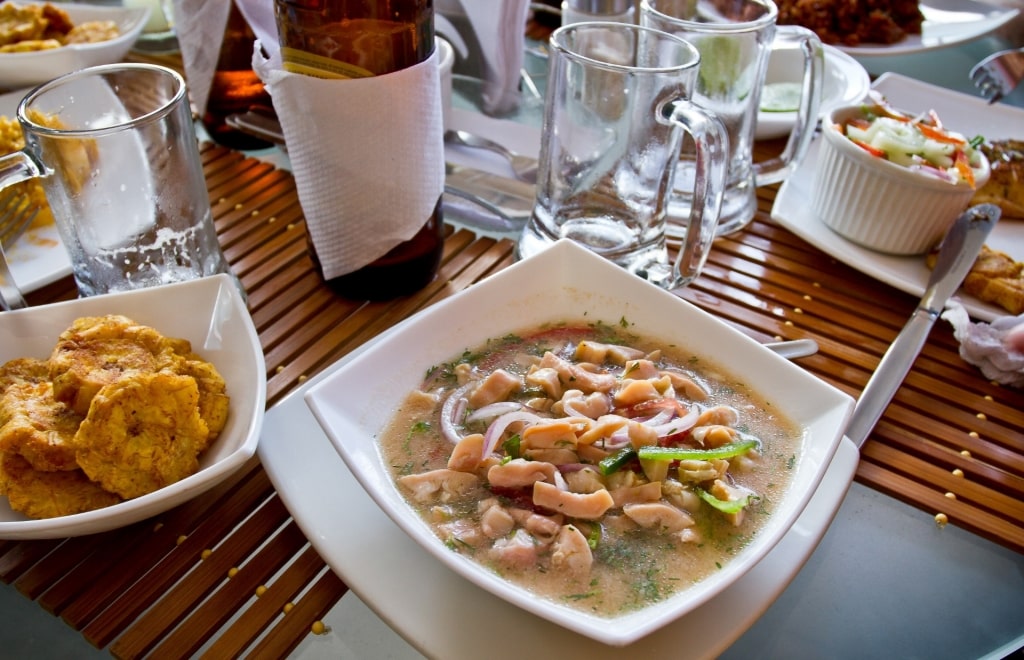
Ceviche
Puerto Baquerizo Moreno has plenty of places to eat and drink, most of them pleasantly rustic and laid back. This is a good chance to try Ecuadorian cuisine, from fresh seafood to tangy, citrusy ceviche, made from fish, shrimp, squid, lobster, and octopus.
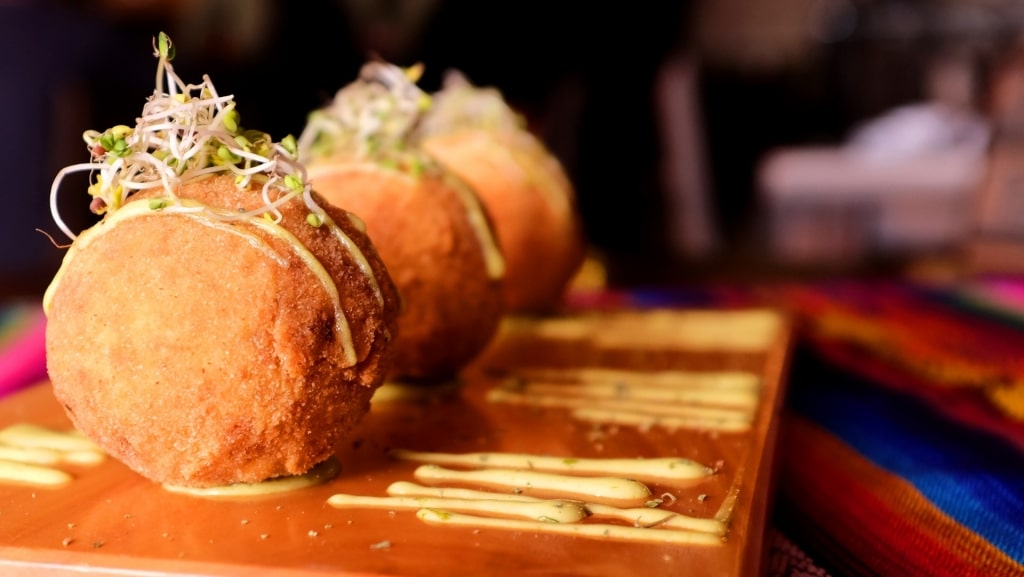
Bolon de verde
You’ll find a lot of dishes cooked with coconut, which adds sweetness, and plantains served in various ways, often fried. Bolon de verde, for example, are delicious green plantain dumplings stuffed with cheese. Look out for exotic fruits from the mainland, including guanabana (soursop, which makes delicious juice) and guava.
For classy Ecuadorian cuisine, try Muyu, on Calle Charles Darwin. The restaurant specializes in organic, home-grown, and foraged vegetables and farm-to-table cuisine, with a lot of emphasis on seafood. Expect beautifully presented, delicate dishes and a lovely setting with sea views.
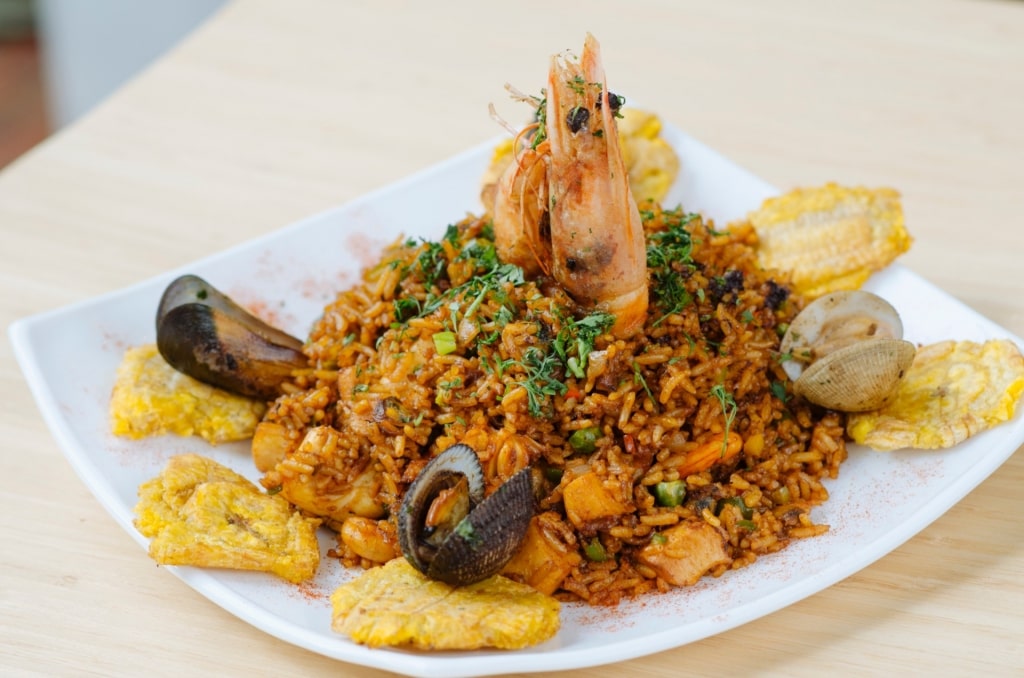
Arroz marinero
More rustic is El Descanso Marinero, a quirky place strewn with beachcombing memorabilia, with seating in a leafy garden. This popular restaurant specializes in seafood and Ecuadorian cuisine. Expect big portions of dishes like fresh-grilled fish and arroz marinero (rice with shellfish, a local specialty).

Coffee
Sabor Cuencano is a laid-back bakery and coffee shop and the perfect place for a mid-morning snack, with an array of mouthwatering cakes and local bread.
Best Time to Visit San Cristobal
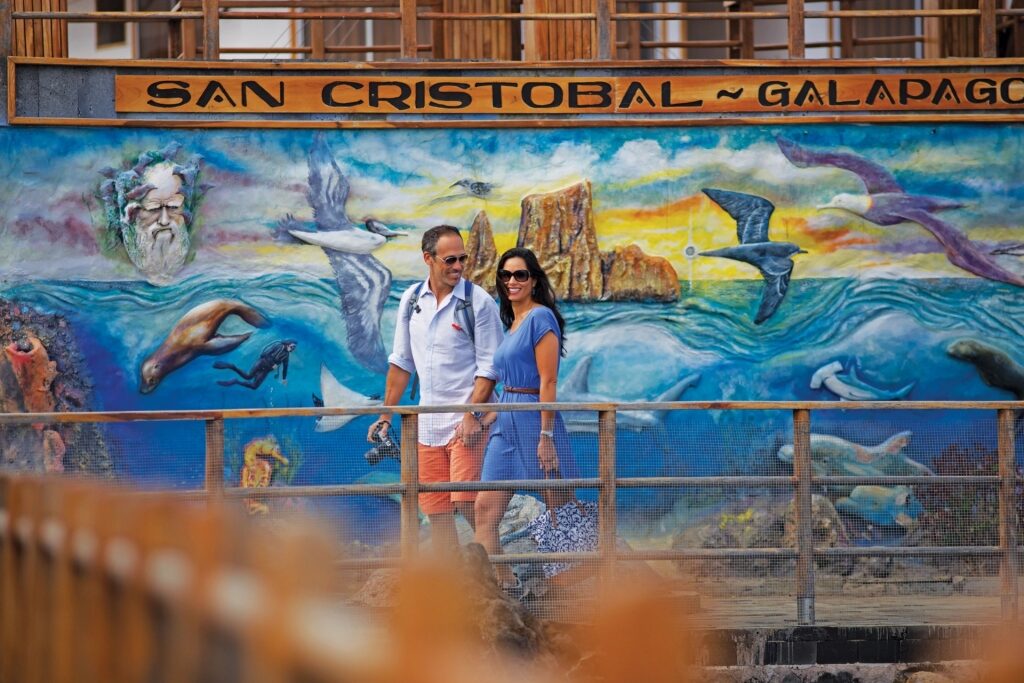
San Cristobal
The Galapagos is a year-round destination and an incredible bucket-list place to visit. As the islands are on the equator, there’s little seasonal variation. January to June is slightly hotter, with more rain (although rain is never likely to spoil your activities), while July to December is cooler and sometimes misty. If you like snorkeling, the water is warmer in the hotter months.
What could influence your decision is the wildlife activity at any given time. Birds and iguanas will be breeding in January, February, and March.
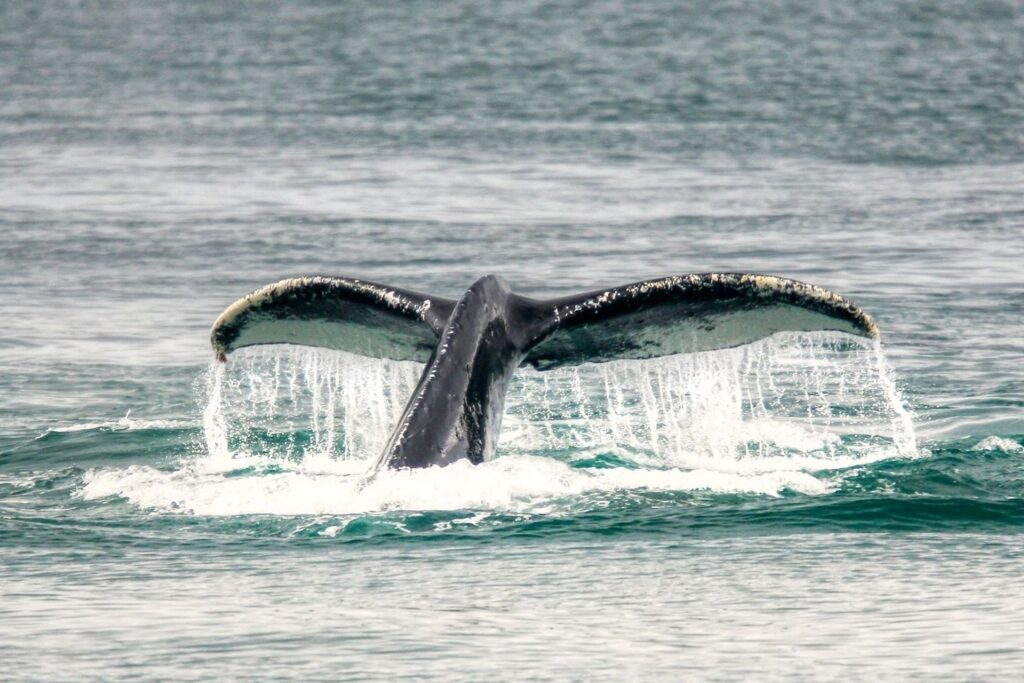
Humpback whale
Humpback whales arrive in June. Sea lion pups are born around August, while you’ll see booby chicks in October and November. Whatever time you visit, there will be sea lions, birds, iguanas, and dazzling fish to look at.
Read: Best Time to Visit the Galapagos
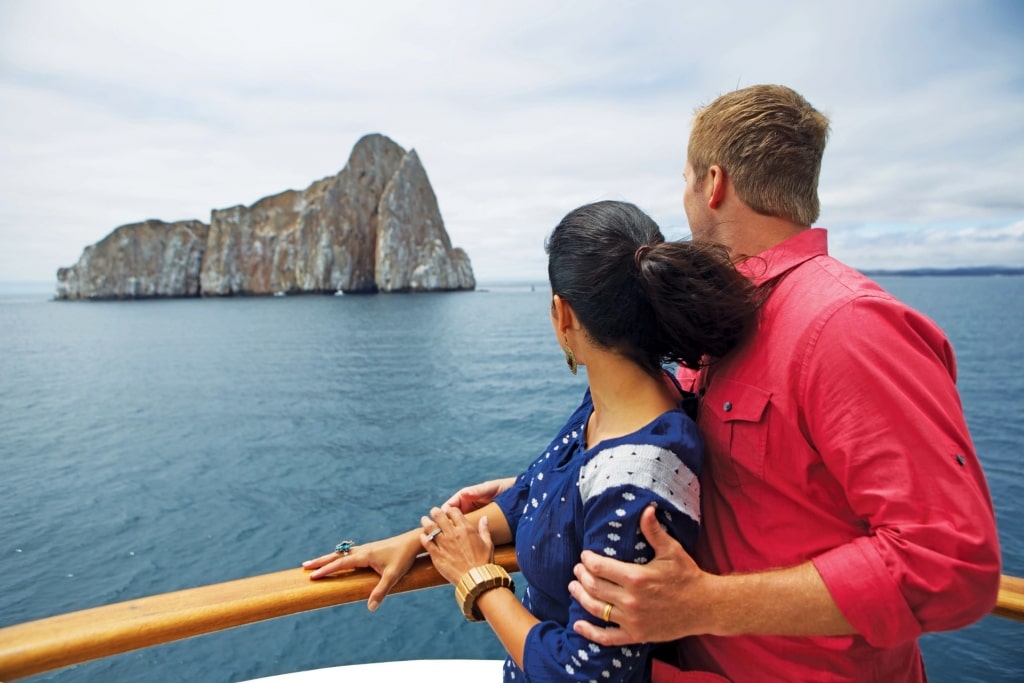
Kicker Rock
Are you inspired to explore the amazing Galapagos Islands? Browse our cruises to the Galapagos and plan the adventure of a lifetime.
